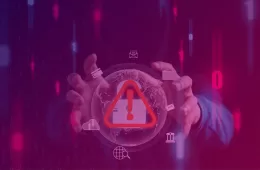
Five Signs Your Organization Needs Screen-Level Data Protection
With digital transformation accelerating and hybrid work firmly established within all types of organizations around the world, data security challenges have evolved. Today, protecting sensitive information is not just about securing networks, storage, or endpoints; it is also about addressing what is visible during daily operations. And what can be seen on employees’ screens is often a risk that many organizations fail to address. Recognizing and managing this gap is essential to strengthening your organization’s overall security posture.
What is Screen-level data protection?
Screen-level data protection refers to security measures and controls that safeguard sensitive information displayed on a computer or device screen from unauthorized viewing, capture, or sharing. While traditional data protection focuses on securing files, networks, and storage systems, screen-level protection addresses the risks associated with what is visually accessible, whether during daily work, screen sharing, or remote access.
Common methods of screen-level protection include:
- Dynamic screen watermarking: Overlaying identifiable information (use name, timestamp, IP address, and other metadata) on-screen to discourage unauthorized screenshots or photos and enable traceability.
- Screen masking or blurring: Hiding sensitive areas during screen sharing.
- Screen capture prevention tools: Blocking attempts to take screenshots or record screens.
These solutions help mitigate insider threats, accidental leaks, and visual hacking, adding an important layer to an organization’s data security posture, especially in hybrid and remote work environments.
So, how can you tell if it is time to consider this extra layer of protection?
Five signs that your organization needs screen-level data protection
1- Sensitive data is regularly accessed beyond controlled environments
If your teams routinely work outside secure office spaces, whether at client sites, home offices, or while traveling, the risk of prying eyes and unauthorized screen capture rises. Even with VPNs and encrypted connections, what appears on a screen can still be exposed. In these cases, visibility itself becomes a vulnerability.
Tip: Many organizations layer screen-level protections (such as dynamic watermarking) on top of existing security tools to cover this gap.
2- You are dealing with higher insider threat risks
Whether due to employee turnover, a growing contractor workforce, or simply scaling fast, insider risk becomes harder to manage as teams expand. Screens are easy targets for accidental leaks or intentional misuse. Screen-level protection can act as a visible layer of protection and provide valuable traceability in the event of a breach.
3- You are under pressure to demonstrate compliance
Frameworks like GDPR, HIPAA, or NIS2 are pushing companies to rethink their data protection measures. Auditors and regulators increasingly expect evidence that organizations are taking comprehensive steps to prevent data leakage, not just through technical controls but also through measures addressing human behavior.
Note: Screen-level controls can help demonstrate a culture of security and accountability during audits.
4- External collaboration is core to your operations
If third parties, vendors, or partners access your systems, the potential for sensitive data exposure increases, especially during sharing documents, shared screen sessions, or remote access. Screen-level protection ensures that data is not quietly copied, photographed, or recorded in ways that bypass traditional security tools.
5️- You have experienced (or narrowly avoided) a data leakage incident
Sometimes, it takes a wake-up call to realize a gap exists. If your organization has dealt with sensitive information being shared beyond intended recipients, even unintentionally, it’s a clear sign that screen-level data security deserves your attention.
Screen-level data protection is a practical step that helps organizations close one of the most overlooked security gaps in modern workplaces. Whether through dynamic watermarking or other screen-level controls, these measures complement existing policies and tools, helping protect sensitive information where it’s most visible








